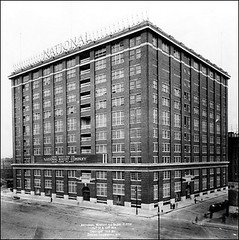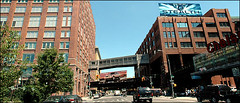Learning from New York City
Detroit and Philadelphia have a massive campaign of demolishing buildings. What they need to be doing is focusing on adaptive reuse, the utilization of various federal tax credit programs (historic preservation tax credit, New Markets Tax Credits, Low-Income Housing Tax Credits, Senior Housing Tax Credits) and utilizing their "large stock of old buildings" to attract creative homesteader types.
Christopher Gray's Streetscapes column in the New York Times, "From Oreos and Mallomars to Today's Chelsea Market," discusses the adaptation of the National Biscuit Company (Nabisco) complex in Chelsea.
From this:
 Library of Congress Photo, ca. 1911.
Library of Congress Photo, ca. 1911.
To this:
 Photo by Francis Roberts for The New York Times.
Photo by Francis Roberts for The New York Times.______
Other cities like Baltimore and Cleveland also do a lot with adaptive reuse. It's the difference between an asset-based approach and the big project, "we know everything," urban renewal focus.



0 Comments:
Post a Comment
<< Home